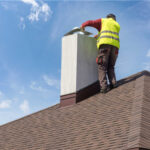Christmas Light Safety Do’s and Don’t
Strands of sparkling holiday lighting make your home feel merry and bright, especially on a gloomy December day. However, if installed incorrectly, they have the potential to damage your home or electrical system. Before you grab your ladder and boxes of lights, review our list of do’s and don’ts for hanging holiday lighting strands safely.
DO’s:
EXAMINE LIGHTS BEFORE HANGING – Return or throw away any holiday lighting sets with cracked or broken sockets, loose connections or frayed or bare wires. Replace burned-out bulbs promptly with bulbs of the same wattage. Hanging lights with damaged electrical wiring leads to a potentially flammable short.
USE VERIFIED LIGHTING AND APPROPRIATE OUTDOOR OUTLETS TO SUPPORT ELECTRICAL WIRING – Only use lights tested, rated and approved by Underwriters Laboratory (UL) or Intertek (ETL Semko) for outside use. These safety ratings should be clearly marked, both on the packaging and with labels attached to the electrical cords. Plug in all outdoor electrical decorations into a ground-fault circuit interrupter (GFCI). This safety outlet is designed to cut the power if electricity comes into contact with water, which is common outside.
CONSIDER USING LEDS OVER INCANDESCENT BULBS – LED lights are about 75 percent more efficient than conventional incandescent lights. This makes your electrical load more than seven times smaller. If you don’t have LED lights, consider the cooler-burning “mini” holiday lights instead of the traditional larger bulbs, which burn much hotter.
 ASK FOR HELP – If installed incorrectly, holiday lighting can damage your home. Additionally, outdoor lights are often dangerous to install, especially if your roof has steep pitches or multiple levels. If you don’t feel comfortable, it is important to seek assistance. Find a friend to help you install your lights.
ASK FOR HELP – If installed incorrectly, holiday lighting can damage your home. Additionally, outdoor lights are often dangerous to install, especially if your roof has steep pitches or multiple levels. If you don’t feel comfortable, it is important to seek assistance. Find a friend to help you install your lights.
DON’Ts:
POWER TOO MANY LIGHTS WITH THE SAME OUTLET OR EXTENSION CORD – Each standard circuit breaker is able to handle about 15 amps of current. Light strings only draw a few milliamps individually. However, when you add too many strings together, it is easy to overdraw power. This has the potential to cause some serious damage to your electrical wiring. Plus, the more lights you connect end to end, the further the power must travel, leading to not-so-bright lights.
NEVER USE STAPLES, TACKS OR NAILS – THEY CAN DAMAGE YOUR ELECTRICAL WIRING – It’s fairly common for a string of holiday lights to have exposed electrical wiring in some areas. Unfortunately, if you use metal fasteners like staples, tacks or nails, it creates a circuit and generates heat that could set your home on fire. Additionally, if metal components come in contact with a live string of holiday lighting and then the current touches the metal components of your home, such as your gutters or downspouts, it creates an electrocution hazard. Always use insulated holders or plastic roof clips designed especially for hanging outside lights
CONNECT LEDS AND INCANDESCENT LIGHTS TOGETHER – Because incandescent light strings require a larger power current than LEDs, connecting them together one after the other causes the power drawn by the incandescent lights to overload — and then fry — the LED strings. It’s better to keep holiday lighting strands completely separate, running each out of a different outlet to avoid frying your electrical wiring.
Every year 150 home fires start with holiday lights and other decorative lighting. And another 260 home fires begin with Christmas trees. Follow these do’s and don’t to cut down on your chances of a home insurance claim. We want you to stay safe this holiday season. Call us or visit our website to discuss your home insurance needs. We can provide coverage from many insurance carriers so you receive the insurance for your budget and needs!
Source: https://apollohome.com/blog/christmas-light-safety/ and https://www.eversource.com/content/general/residential/safety/electric-safety/holiday-light-safety

 Previous Post
Previous Post Next Post
Next Post